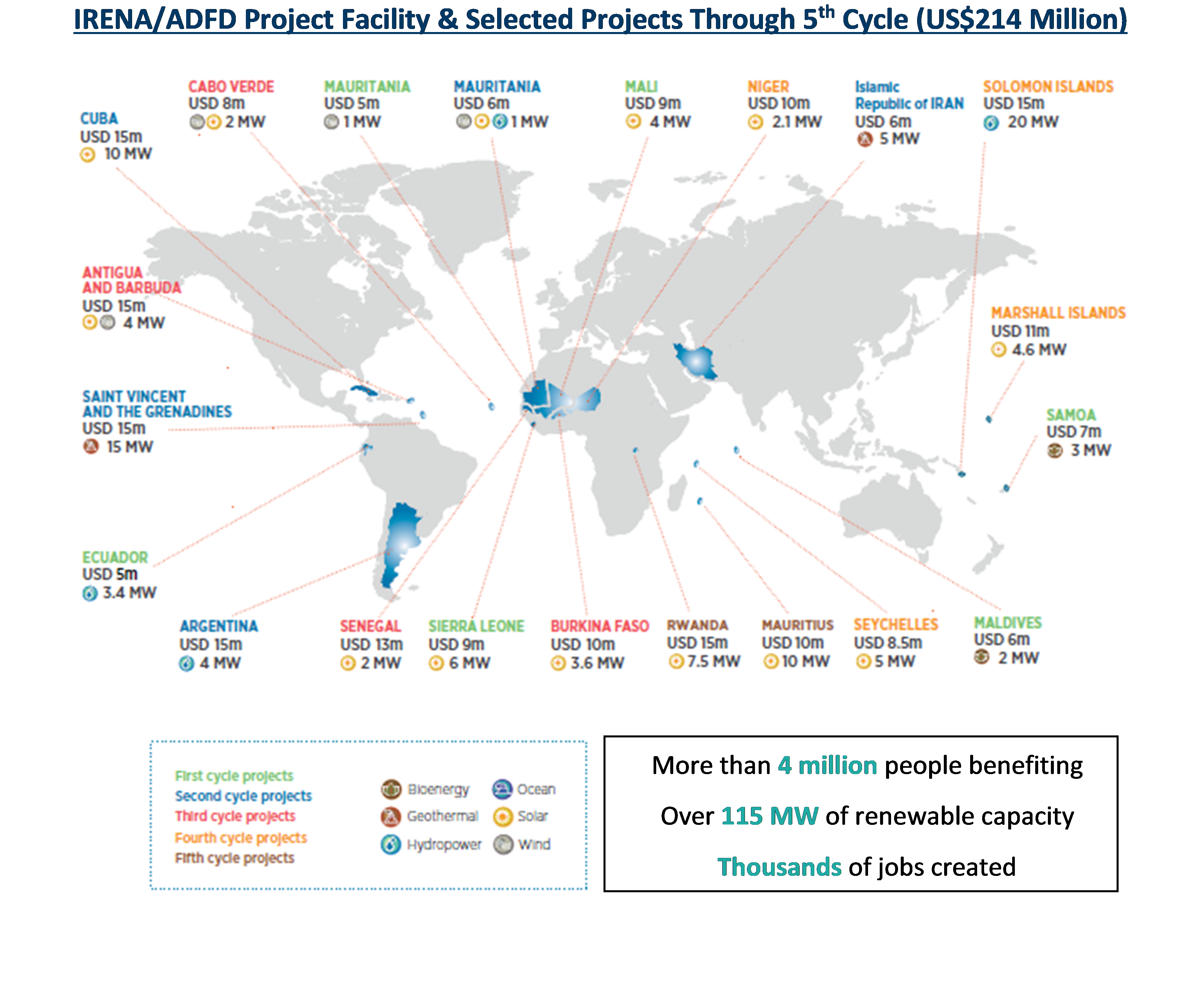
To help investors look beyond returns and unpack feasibility and potential impact of a renewable energy project, we put together some common lessons learned below on impact investing using our recent evaluation work with the International Renewable Energy Agency (IRENA) and a Development Finance Institution (DFI) to provide context. IRENA and the Abu Dhabi Fund for Development (ADFD) established a join project facility to support replicable, scalable and potentially transformative renewable energy projects in developing countries. ADFD set aside ~US$ 350 million in concessional loans for projects recommended by IRENA which utilize various renewable energy technologies and resources such as solar, wind, bioenergy, geothermal, hydropower, and ocean energy. The facility has already funded 21 projects with US$214 Million (~60% of total funds) in the first 5 rounds and is currently in its 7th review cycle.
Lessons for impact investing in renewable energy
- Make sure the project aligns with your financial and impact goals. To mitigate risk, due diligence of a project is expected before any investment is made, but evaluating for potential impact also requires research which often benefits from local expertise. Local knowledge can provide context for how a project fits into the broader development plans in the region and whether it’s likely to be as transformative or innovative as it claims.
- Consider regional market structure and government resource planning. While the ADFD project requires government guarantees to ensure local government support before providing funding, not all projects receive such high profile attention. Another way to check if the project is likely to be successful, is to consider the local utility’s market structure and whether there is precedent for a project of this size and nature connecting to the local electricity grid. You should also consider how the project aligns with regional resource goals or grid build-out plans if it’s an off-grid installation. Checking which regulations are in place or under development can help avoid costly stranded investments, but if a project is servicing a critical customer need and meeting impact goals then the chance of success go up regardless of government plans.
- Check the experience of the developer and their track record delivering on similar projects. The renewable energy industry is growing quickly with a broad mix of companies looking to develop projects. Working with developers that have demonstrated their ability to implement similar projects particularly in the country of interest significantly reduces project risk. The potential transformative impact of first-of-a-kind project in the country also needs to be weighed against these risks.
- Set clear requirements for co-financing and help with referrals to expedite the process. Requiring some investment from the developer and potentially other co-financiers reduces your risk exposure and increases the project’s chance of success. The ADFD, for example, only covers up to 50% of the project costs and requires the remainder to come from co-financing. Waiting for projects to obtain co-financing, however, created a number of delays for some of the projects selected by IRENA and ADFD.
- Establish guidelines on how you want your funds to be used (e.g. RE infrastructure only, construction financing, development capital, project term debt). The way your funding is used can also have varying levels of impact. If, for example, the financing enables an early stage project that wouldn’t have been developed otherwise, the impact might be greater versus a late-stage project with a lower risk profile. The ADFD, required projects to be in feasibility stage (e.g. prior to tendering) and targets renewable energy infrastructure specifically.
- Check whether the project has already obtained other support. A number of support products from the World Bank Group and Development Finance Institutions (DFI) are available to help reduce risk associated with early stage renewable energy projects in developing countries. For example, political risk insurance for unforeseen events and partial risk guarantees for some utility off-takers can significantly increase the project’s chances for success and enable projects in countries that need it most. (See article on Scaling Solar for more detail.)
- Make clear sustainable impact goals up-front for the developer. Incorporating transformative impact goals into the early stage of project planning can significantly help developers design a project that meets these goals. The ADFD requires that all projects have a positive socio-economic, environmental, and other sustainable development impact in the country of implementation. While this is still a broad goal, it was still helpful to read how developers intended to address this in their bidding documents and compare the impact and scalability of projects relative to each other.
- Look at off-taker agreements of other similar projects recently built in the region. Having a bankable Power Purchase Agreement (PPA) is a critical step for large-scale renewable energy projects. The terms of the PPA can vary considerably. Investors should look at the precedent that has been established by other recently built projects in the region and evaluate whether those PPAs would potentially align with your investment goals.
The IRENA and ADFD project facility provides valuable lessons learned on how to scale the renewable energy industry through impact investing. It also shows that there is more to effective impact investing then lending money to any renewable energy project and walking away as not all projects have equal benefits or success rates. IRENA and ADFD still stay actively engaged with each project they fund through joint appraisal missions and periodic follow-up through conference calls and site visits to enable success. Hopefully other investors can apply these lessons to their projects to achieve the rapid scale-up of renewable energy in developing countries required for the clean energy transition.
As an update to this article, IRENA and the ADF published their lessons from the selection process in a detailed report on October 2020, so you can read more about this their topic if interested.
Sources: The photo map and details on the IRENA/ADFD facility were sourced from IRENA’s website

106 Comments